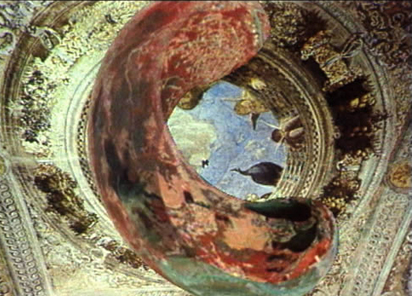Yve Lomax writes, in the catalogue to ''Outer Space'', of a moment not too far in the future when ''im-ages will only refer to other images, ceasing to refer to anything outside-themselves. We will inhabit an envi-ronment of images from which there is no escape''. What a terrible thought. The idea is that we watch so much television nowadays, are exposed to such a quantity of visual imagery by it and the other big media like advertising, that we can no longer tell the difference between what is real and what is not, what is fact and what is fiction.
As Lomax puts it, explaining the title of the current show, ''No longer will there be any outer space, any space outside of images.'' The paranoid notion that secondary reality has usurped the place of actual, felt experiences is a commonplace of what has come to be known as ''postmodern'' theory. We are all lost souls in the Forest of Signs, hapless victims of ad-man and media mogul. There is already so much existing art that stems from this received idea that it is hard to believe there are any artists out there who still believe there is any mileage in it. In fact, most of the artists who have been invited to produce work for the South Bank's touring exhibition have studiously ignored its supposed theme. As a consequence, ''Outer Space'' narrowly avoids disappearing up its own black hole.
Ania Bien's installation, Hotel Polen, consists of 18 large, framed black-and white photographs hung along the sides of a narrow space so as to resemble doors leading off a corridor. A hotel corridor, you pre-sume. Each features what appears to be a memento of some sort - a snapshot of a pair of children, a piece of a map, a...


